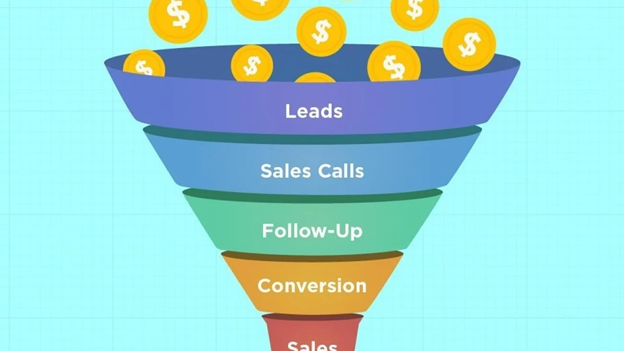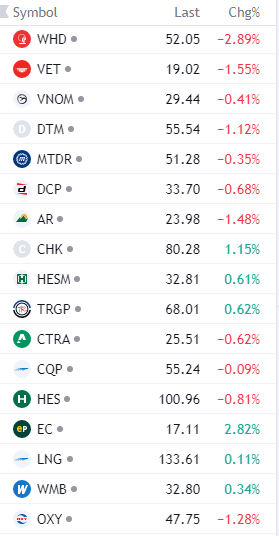If you want a TL;DR for this article, the main idea is that creating a consistent and easily repeatable process for your trading is the best way to never run out of trading ideas.
Endlessly tweaking screener parameters and cycling through different software platforms doesn’t generate ideas–those are simply tools that make your process quicker and easier.
Let me use a cooking analogy.
Hot food delivery is huge for a reason: most people feel they’re too busy to cook. They might get into a rhythm for a week but ultimately fall back into ordering $30 meals from Doordash. It’s not because cooking takes forever, but because cooking without a plan takes forever.
Imagine every time you cooked, you had to scroll through apps to pick out a new recipe, go shopping for the right ingredients and then finally prepare to cook a recipe that’s relatively unfamiliar to you.
Constantly checking the directions on your phone, doing things out of order, leaving something on the burner too long, etc.
This will take forever, and most of us don’t have the discipline to keep it up. If this is your version, it’s probably not unreasonable to order Doordash when you look at how many hours you spend cooking in comparison to your hourly rate.
But the way to start is to simplify.
Select three or so recipes in the same food family and buy a protein and some generic ingredients in that family to eat for the week. For example, chicken, black beans, peppers, and rice. You can prepare dozens of different Mexican dishes with these ingredients and a few extra things everyone has in their fridge.
Approached this way, you can get recipes prepared in less than 20 minutes. Far easier to do multiple times a week.
Trading is the same way.
If your process for finding trade ideas is spending hours sifting through Twitter, blog posts, research reports, etc., you’re going to burn out quickly and there’s no consistency to such a process. One week you might find five great ideas and then go two weeks without finding anything good.
The consistency of your trading results mirrors the consistency of your trading process.
So in this article, we’re going to review a few methods by which you can add consistency to your trade idea generation and as a result, have a nearly endless source of trade ideas.
Creating a Process for Generating Trade Ideas
Your process depends on your motives. The process of a day trader differs from a global macro hedge fund trader, which is different from the options volatility trader.
The goal in this article is to go from having a chaotic and unfocused methodology for producing good trade ideas to creating a trade idea “funnel,” just as a sales & marketing team at a big company does. But before we can do that we need to get at how you source your ideas.
We’re going to begin with a bit of an exercise.
Let’s run through a list of questions and see if we can get to the root of which corner of the market you want to extract your trading ideas from. At the very least, this should get you thinking about how to create a process. After all, this is a process about trading. And trading isn’t easy.
Respect the fact that it might take a while to create and will probably take constant refining based on your experience to get things sitting right.
Do you generally source your trade ideas using technical analysis, fundamental analysis, or a combination of both?
Set a timer for five minutes. Write down as many sources of trading ideas as you think of. For example, as a technical trader, I might write down “stock screener” and “Twitter.”
- After you’ve finished, put an asterisk next to the source that provides a consistent flow of ideas, rather than sporadically giving you ideas.
- Put a checkmark next to the sources that provide you the best return on time invested.
-
Once you’ve found some ideas that are compelling, what do you generally do next?
- (If fundamental idea) use technical analysis to see if the idea’s timing is right
- (If technical idea) use fundamental analysis to see why the stock is going up
- (If technical ideas) sift through the charts of your idea list and start eliminating the obvious misfits
This will take some time and reflection for many. But we can narrow down the process to just three major steps:
- Sourcing Ideas
- Narrowing down idea list
- Selecting your best ideas to perform analysis on.
Creating an Idea Generation Funnel
If you’ve ever had a sales job, you’re familiar with funnels. The customer starts as a prospect, with a passing potential interest in your product. You qualify your prospects and some of them become leads. Then you start warming them up with follow-up calls and whatnot until you can get them to make some commitment–like a meeting.
A certain percentage of your meetings result in sales, and this is the bottom of the funnel. A lot of stuff goes in through the top, and far less comes out at the bottom.
Why do salesmen use funnels? Because it organizes and systematizes the chaotic process of making sales. A funnel gives you an idea of the percentage of prospects that become leads, of leads that become meetings, and meetings that become sales. It allows you to say “on average, one in 25 people I approach will buy my product.”
If your goal is to make ten sales per week, then you know you need to generate at least 250 prospects per week.
For this reason, we want to create a trade idea generation funnel. Because, on some level, trading and selling are the same. A trader has the choice of trading the tens of thousands of securities available to him. The salesman has an industry full of people to pursue.
Much of the magic sauce is knowing how to filter through the noise and find that selective group of opportunities that have a dramatically higher opportunity of success.
So let’s run through this concept with a simple example involving a technical trading plan. We will:
- Be looking for trend pullback plays
- Want to trade on same side as broad market (buy in bull markets, short in bear markets)
- Have a bias towards leading stocks
- Have a bias towards stocks in an exploding theme
- Trade liquid stocks – over $10M in dollar volume per day and $2B+ market cap
- Stocks in leading sectors
Step one is sourcing ideas. There are many ways to do this, but the straightforward way, especially with technical trading, is to use a stock screener. So we need to figure out how to tell the screener what we’re looking for. Obviously, we can’t just say “trend pullback.”
So we need to come up with some proxies for a trend pullback. I like to keep it simple but you can use any number of cool tricks on whichever screener you please. This is also a process; developing your skill at creating stock screens that fetch what you want.
One of the simplest screens that always yields results for me is the following:
- 0-5% below 52-week high
- 200-day SMA < 50-day SMA
- Market Cap > $2B
- Price > $100
At the time of writing, you get a number of predictable results from sectors like energy, precious metals, and utilities.
I’m using FinViz and like the viewing mode “TA,” which displays a daily chart and some summary statistics about the company:
From here I quickly scan through the large list and add anything compelling to a watchlist on TradingView. I’ll add both developing pullback setups as well as stocks in strong trends that are likely to pullback in the near future.
At this point, I’ve narrowed down the list to about 15-20 stocks.
Now here is where I’m sifting for the gold.
I’ll do a slightly longer look at each chart and try to find a reason to eliminate it. I’m trying to narrow down this list to less than 10 names. One stock I decided to remove from the list because it’s coming up against a major resistance level, another I removed because it does not trade cleanly.
Once we have a much shorter list we can move onto scrutinizing each stock in more detail and deciding the best 2-3 trade opportunities available to us at this time.
We quickly go from thousands of potential stocks to just 2-3. Just as the salesman can sell insurance or real estate to just about anyone–instead he focuses on key indicators of good potential buyers and puts them through the funnel.
Bottom Line
This is your trade idea funnel. You can do it with anything. Stock screeners, ideas from Twitter, newsletter stock picks, stocks scooped from the headlines, stocks you’re hearing about at the water cooler, whichever way you get your ideas, just put them through this funnel until you can narrow them down to just a few high-quality ideas.
Without a consistent flow of trade ideas, you’re forced to spend most of your time in “firefighting mode,” trying to generate “leads” for your trading, rather than honing the trading process itself.
The classic mantra of working “in” the business vs “on the business applies big-time here.





